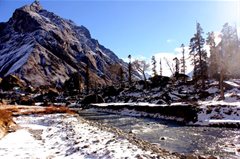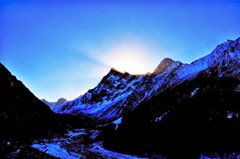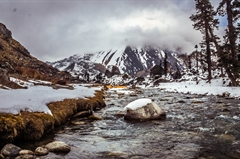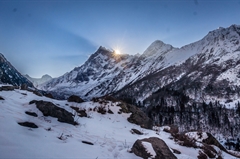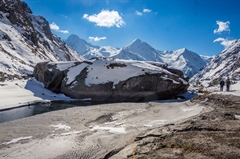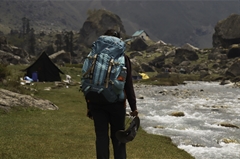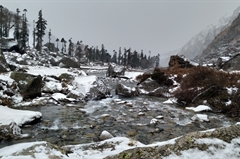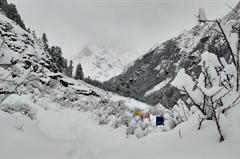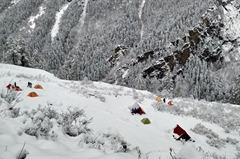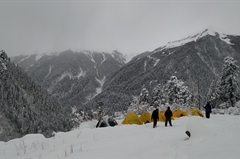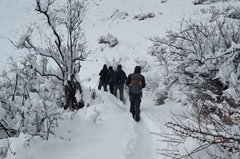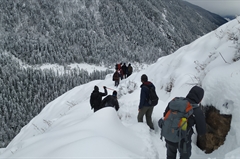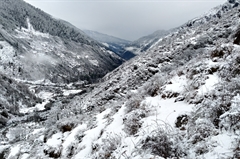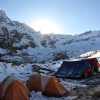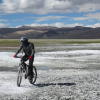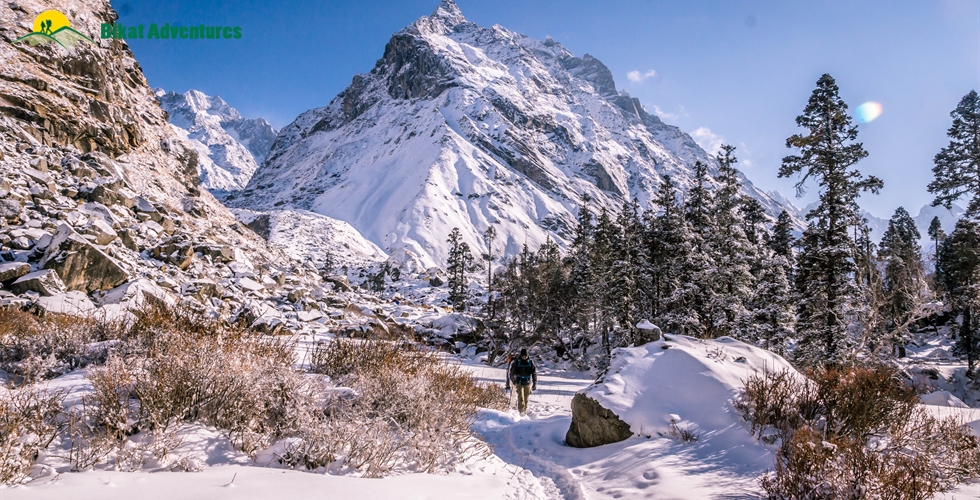
Har ki Dun Trek
A Gorgeous River Valley Trek for Beginners
Available Batches
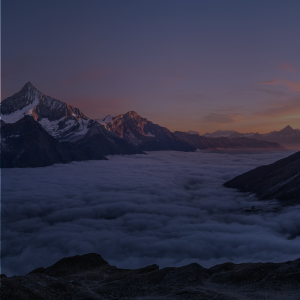


Description
Brief Itinerary
Detailed Itinerary
Day 1
Drive from Dehradun to Sankri (1950 m)
Distance: 197 kms
Duration: 9-10 hours
The journey begins from the capital city of Dehradun. If you have opted for transportation by Bikat Adventures, please ensure you board your vehicle from ISBT Dehradun latest by 7 AM. If you are traveling on your own to Sankri, this article could come in handy in planning your trip.
Sankri is located at a distance of 197 km from Dehradun and would take about 9-10 hours to cover, gaining an altitude of 1950 m. The drive will take you through the spectacular hills of Mussoorie and the renowned Kempty falls. The roads here are long and winding and swift mountain streams run parallel to the roads in many sections.
After crossing Mussoorie, the landscape changes distinctly. Deep gorges are replaced by a canopy of blue pine forests that carry the fresh scent of the woods. The Yamuna River accompanies you constantly throughout.
The final stretch of 22 km to Sankri, however, steals the show as we will be driving through the infamous Govind National Park that is home to a plethora of exotic flora and fauna. The roads can be rough and bumpy in some sections but the breathtaking views of the dense conifer forests, Tons river valley and scattered apple orchids will more than make up for it.
Expect to reach Sankri by 5 PM in the evening. Sankri is a lush green village that hosts some unparalleled views of Mt. Swargarohini, especially during sunset time. During peak winter season, that is December to February, you will encounter snow right from Sankri itself.
The stay today will be in guest houses. After check-in, trekkers can freshen up and explore the surrounding areas.
Day 2
Sankri (1950 m) to Dhatmeer (2400 m) by road; Trek from Dhatmeer (2400 m) to Pauni Garaat (2500 m)
Distance: 18 kms + 6 kms
Duration: 1.5 hour drive + 4-5 hours trek
There is a motor-able road stretching over 18 km that connects Sankri to Dhatmeer. We start at 8 AM and drive through a forest road flanked by Deodar and Bamboo trees. Streams of clear water swerving down the hills accompany you throughout this stretch. The drive is a delight for all nature lovers as you will be able to spot rare Himalayan birds like the Himalayan Raven, Red-Billed Blue Magpie, and Himalayan Bulbul.
It takes an hour to reach Taluka. Taluka is a small picturesque hamlet with a cluster of concrete houses and a couple of government guest houses. The gushing Supin River flowing across the village dominates the landscape.
After a short drive from Taluka, we reach Dhatmeer by 9:30 AM & begin the 5 km trek towards Pauni Garaat. The trek commences on an uneven stony trail that runs out of the village. A few minutes into the trek, the trail expands into an open land and you will find yourself walking along the banks of the Supin River.
Eventually, the trail translates into a level walk through dense lush conifers where you spot the first cemented bridge running over a small gentle stream. After about 20 minutes, you will come across another wooden bridge over a stream. You can fill your water bottles here.
The hike is quite pleasant throughout as you will be walking under the shade of Walnut, Pine and Cedar trees accompanied by the sound of the flowing river. You might even find walnuts on the ground in autumn. The gradient of the trail is easy mostly with gradual ascents. You will often see mule-traffic along the way accompanied by locals carrying heavy loads on their backs in preparation for the long winters.
A couple of hours into the trek, you will see the small village of Gangar on the other side of the river. Small wooden shops serving tea and snacks dot the landscape. We will be taking a quick halt here to have our packed lunches.
The trail out of the Gangar village runs along the right hand side of the river. Fields of Potato and Maize can be spotted along the way. The campsite for the day, Pauni Garaat, is situated in a vast clearing enroute. The actual village of Pauni Garaat, however, is located on the other side of the river.
After setting up camps and freshening up, take some time to explore the area around the campsite. Have a hot dinner and tuck in early to get ample rest for the next day.
Day 3
Pauni Garaat (2500 m) to Seematra (3250 m)
Distance: 8 kms
Duration: 5-6 hours
The day begins with a short session of yoga and stretching to pump up for the trek ahead. Post breakfast, we commence the 8 km long trek to Seematra. The trail runs through a thicket of towering forests culminating in the village of Seema. It is marked by a sparse cluster of concrete structures and a forest department guest house set on the banks of the Supin River. The Osla village is located on the other side of the river, at a slightly higher elevation of about a hundred metres.
Next to the village of Seema lies the infamous Seema Bridge, a large hanging bridge running across the Supin River with a backdrop of colossal mountain ranges. The jewel-blue Supin River can be seen sparkling as it winds its merry way through the boulders.
Once you cross the bridge, get ready for a steep climb all the way up to the point where we meet the trail coming out of Osla. Expansive farms, mostly growing Amaranth, dominate the landscape here. You will find villagers working in the farms. During monsoon, the amaranth takes on a deep reddish hue adding a striking contrast to the scenery. After half an hour, the trail opens up to grand snow-capped views of the Banderpoonch and Swargarohini ranges.
The trail gradually climbs higher beyond this point passing by a variety of flowers like fleece and sunflowers. As we make our way past a couple of fields, the river Supin retreats from view far below. This stretch is blessed with some magnificent viewpoints of the Dhauladhar ranges.
The trail eventually culminates at a ridge locally named as Kalkattiyadhar. Our campsite, lays a short descent away from this ridge. Expect to reach the campsite by 1 PM in the afternoon.
The Seematra campsite is a beautiful open meadow set in an exquisite location. You will be able to spot some renowned peaks like the Buyal Devsu and Mt. Black Peak from here. You will also be able to see the Ruinsara Range running on the left and the Kedarkantha Summit on the right. Take a breather basking in the expansive views of the valley and the warm sun. This day being a short one gives ample time to the trekkers to acclimatize to the altitude and prepare for the summit.
Note: The forest department of Uttarakhand shuts the Har Ki Dun trek for visitors post December until mid March.
Day 4
Seematra (3250 m) to Har Ki Dun (3566 m) and back to Seematra (3250 m)
Distance: 14 kms
Duration: 7-8 hours
The summit day is the longest of all days as we will be covering a distance of about 14 km. Be prepared for an early start. We begin our hike at 6 AM post breakfast just as the sun rises. In December, the pristine white snow-blanket all around shines meekly as we trail through. Depending upon the density and rigidity of the snow, your trek leader may provide you with microspikes and gaiters for easy navigation.
The trail heading out of the campsite runs high above the convergence of the Supin River and the river from the Ruinsara valley. From this point onwards, sprawling views of the snow-clad peaks of Ruinsara valley (including Mt. Black peak) with the Har Ki Dun valley resting below take over the landscape. The trek gradient is moderate with a mixture of steep and gradual ascends.
The trail eventually leads you to a stretch with an incline of about 45 degrees. Although it is not steep, the section is likely to be covered in knee-deep snow making it a taxing ascent.
The last leg to the summit climbs side by side with the river through a dense forest before opening up to a clearing cradling some of the prominent peaks in the region. This is the Har Ki Dun Summit. From the summit, you will be able to see the open grounds below Swaragrohini-1 peak and also catch glimpses of Hata Peak and Black Peak covered in snow.
The valley has plenty to explore such as meadows full of alpine flowers, glacier moraines, coniferous forests, swift streams and the grand view of huge mountain ranges. You can explore the entire ground in about an hour or two and head back to Seematra after lunch.
Day 5
Seematra (3250 m) to Pauni Garaat (2500 m)
Distance: 7 kms
Duration: 3-4 hours
Wake up in time to catch a pleasing sunrise from the Seematra campsite. The morning temperatures are quite low and can even drop to subzero levels in December. The journey back is fairly easy since the trail is mostly downhill. After having breakfast, we begin the trek by crossing the Har Ki Dun Bridge and continue the gentle descent downstream. From there, ascend up to the Kalkattiyadhaar and descent gradually till Pauni Garaat.
Since the trek is not very long today, we will explore the quaint village of Osla along the way. The village, spread along a mountain slope, has several double storied wooden houses with slant roofs. There is a charming Someshwar temple dedicated to Lord Shiva with beautiful and detailed carvings on the walls here. If time permits, you may also spend some time talking to the locals who are always happy to see trekkers. We will then head back to Pauni Garaat over the downward trail and spend the night there.
Day 6
Trek from Pauni Garaat (2500 m) to Dhatmeer (2400 m); Dhatmeer (2400 m) to Sankri (1950 m) by road
Distance: 18 kms + 6 kms
Duration: 4-5 hours trek + 1.5 hour drive
After breakfast, we begin our descent to Dhatmeer retracing the same path we came through. The trek runs through thick forests of Chir Pine, various ferns and flowering trees making up for a beautiful trail. Beware of “bichu ghaas” growing along the sides of the trail. Even a gentle touch of the plant can leave you with a stinging sensation for about 25 minutes. Don’t worry though, the herb is not poisonous and is in fact cooked by locals as a vegetable.
Since we will be descending throughout today, be careful not to exert too much pressure on your knees while walking. Trekking poles can come in handy for this stretch.
A couple of hours into the trail, you will find yourself walking alongside the waters of the Supin River. The final stretch to Dhatmeer is over a cemented trail, at the end of which our vehicle will be ready to take you back to Sankri by road. We reach Sankri just in time to sit back, relax and reminisce on memories of the trek over a hot cup of tea.
Day 7
Sankri (1950 m) to Dehradun (640 m)
Distance: 197 kms
Duration: 9-10 hours
After breakfast, savor the mesmerizing landscapes around as we prepare to checkout. We will be retracing the same roads that we drove through on the first day. Expect to reach Dehradun by 7-8 PM.
Note: To be on the safer side though, arrange your return journey expecting to be at the Dehradun Bus Stand at around 9 PM. This could help account for any delays we may run into along the way.
What's Included
- Food as per menu on the trek
- Forest Permits/Camping Charges (only if availing transportation through Bikat Adventures)
- Tents, Sleeping bags, mats
- Safety Equipments
- Trek guide, cook, helpers, porters and mules for carrying common luggage
- Services of a Trek Leader
What's Not Included
- Meals during road journeys
- Meals during hotel/guest house stay
- Carriage of Personal Bags during the trek
- Any kind of Insurance
- Any expense of personal nature
- Any expense not specified in the inclusion list.
- Transportation from Dehradun to Sankri and back to Dehradun
Are you Eligible for this Adventure?
Har ki Dun, also known as The Valley of Gods is set at a height of 3500 meters. It is ideal for beginners looking to step up their trekking game.
BRS Level Required
TThis makes it an easy level trek. Known for its changing scenery, the terrain of the trek is not so challenging, however, the long distances one needs to cover each day call for a certain level of stamina. You will need good lung capacity and leg strength to cover the length of the trek safely.
If you do not know what level of BRS trek would suit you best, worry not! Fill out this Form:
we will send you a progression chart to help you comfortably get out of your comfort zone in order to level up and ultimately reach your highest potential in the big, bad world of outdoor adventure.
Packing List
This is a list of essential items for individuals doing the trek with Bikat Adventures. This list contains only those items which the participants are required to bring with them. The list excludes those items which are provided by Bikat Adventures on the trek. We have divided the items into five categories. All the items in the list are essential except for those marked as optional.
Trekking Gear
- Ruck sack bag with rain cover. Qty -1
- Day Pack Bag - Recommended for treks with summit day
- Head Torch with spare Batteries. Qty -1
- U V protection sunglasses. Qty -1 Here is how you can choose the best sunglasses for trekking.
- Water Bottles: 2 bottles of 1 liter each
Footwear
- Non-skid, deep treaded, high-ankle trekking shoes Qty -1
- Pair of light weight Slipper/Sandals Qty -1
Clothing
- Quick Dry Warm lower or Track Pants. Qty - 2
- Full sleeves T-shirts/ Sweatshirts. 1 for every 2 days of trekking
- Pair of thick woolen socks. 1 pair for every two days of trekking
- Thermal Body warmer Upper & Lower. Qty-1
- Undergarments. Qty - 1 for every day of trekking
- Warm jacket closed at wrist & neck .Qty-1
- Full sleeves sweater. Qty -1
- Rain wear ( Jacket & Pants ) . Qty-1
- Pair of waterproof, warm gloves. Qty-1
- Woolen cap. Qty-1
- Sun shielding Hat. Qty -1
Toiletries
- Personal toiletries kit (Small Towel, Toilet paper, paper soap, Bar soap, toothbrush, toothpaste, cold cream, etc.)
- Sun screen lotion small pack. Qty -1 Here is your Sun Protection 101 to stay safe in the bright sunny outdoors.
- Lip Balm small pack. Qty-1
Utensils
- Small size, Light weight & Leak proof lunch box. Qty-1
- Plate. Qty- 1
- Spoon.Qty-1
- Tea/Coffee (plastic) Mug.Qty-1
Miscellaneous
- Camera (Optional)
- Carry your medicines in plenty in case you have any specific ailment. Consult your doctor before joining the trek.
- Dry fruits, Nuts, Chocolate bars (Optional)
Frequently Asked Questions
Why Bikat?
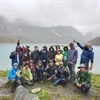

Small Group Size
Our batch sizes are capped at 15 for smaller treks with the trek leader and trekker ratio of 1:8. This ratio, in our years of experience, has proven to deliver the best trekking experience for individuals as well as groups. Capping the size of the group ensures individual attention to each trekker so that no signs of distress or need during the trek go unnoticed. It also helps to form a more cohesive cohort with better group energy which helps define the rhythm and pace of days on the trek. As you go higher up on the BRS scale, since the stakes are higher, expeditions have an even smaller group size with the ratio of expedition leader to climber set at 1:2.
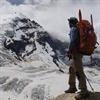

Qualified Trek Leaders
We follow a rigorous regime of hiring and training our experts in the field. Each trek leader is a certified mountaineer with years of experience in the field. In addition to their qualification, they also go through practical and situational training to tackle any and all kinds of sudden conditions that may present themselves on the ground. Being unpredictable is the core nature of the mountains but being ready for any circumstance as best as possible is a controllable asset that we try to nurture. Our field experts are also trained in basic medicine and first-aid response. Watch: Forerunners - The Making of A Trek Leader At Bikat Adventures
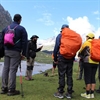

Guided Progression
Since Bikat Adventures is a learning-based organization, we help you climb up the ladder of difficulty within the sphere of outdoor adventure systematically. Our on-ground training modules are designed to handhold you through the upskilling process so that you are ready to take on bigger challenges.
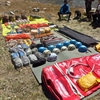

Equipment Quality and Check
All the gear used on our treks and expeditions is tried and tested, maintained for good quality, and is overall top-notch in quality and condition. We are continually looking to obtain the best of everything there is in the market so as to ensure optimum safety.
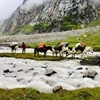

Support Systems
Along with the staff you see on-ground, we have a team of superheroes working in the background to give you the best experience possible. Our background team also comprises local staff from each area who know the region best. Having local support helps with studying the area, pre-planning, execution, and in receiving timely support in case of emergencies in these remote locations.


Communication
Our on-field staff is in constant contact with our teams based in primary locations so as to eliminate any avoidable delay in reaching additional help and support when required. We try to use the best tools for communication available, including satellite phones, in regions where they are not restricted.
What our customers Say
Cancellation Policy
Cash refund
Cancellations up to 60 days prior to departure date
Between 60 days upto 30 days prior to departure date
Between 30 days upto 10 days prior to departure date
Less than 10 days prior to departure date
Voucher refund
Cancellations up to 30 days prior to departure date
Between 30 days upto 15 days prior to departure date
Between 15 days upto 10 days prior to departure date
Less 10 days prior to departure date
- Cash refund is applicable only in case of bookings made without using any promotional offer code or Cancellation Vouchers or Discounts
- This is only a brief of cancellation terms. For finer details please refer Detailed Cancellation Policy.
Blog Posts
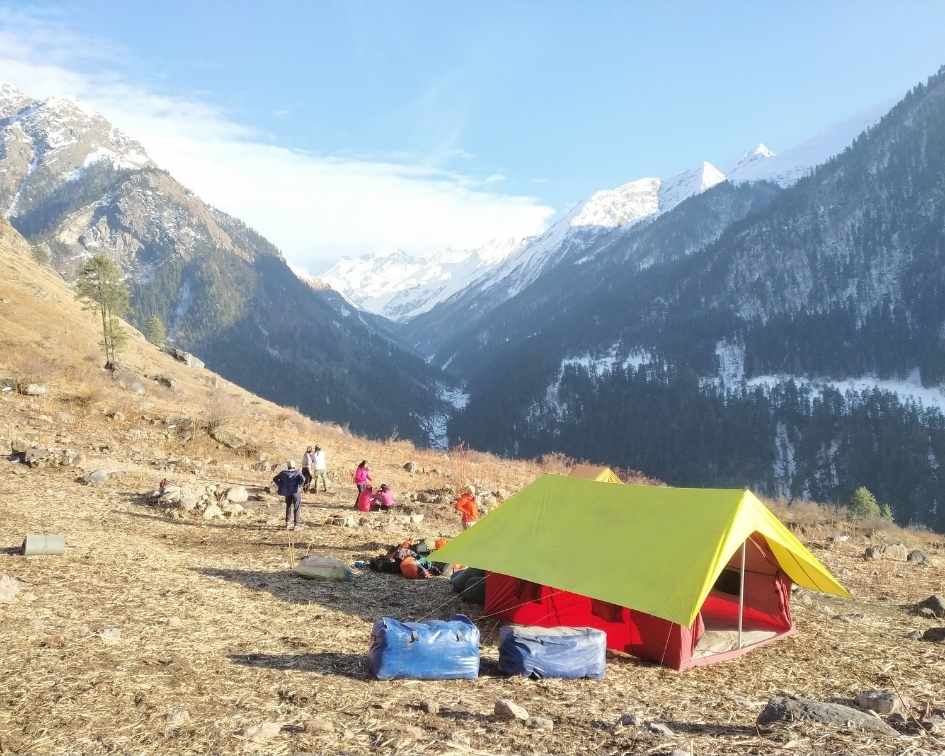
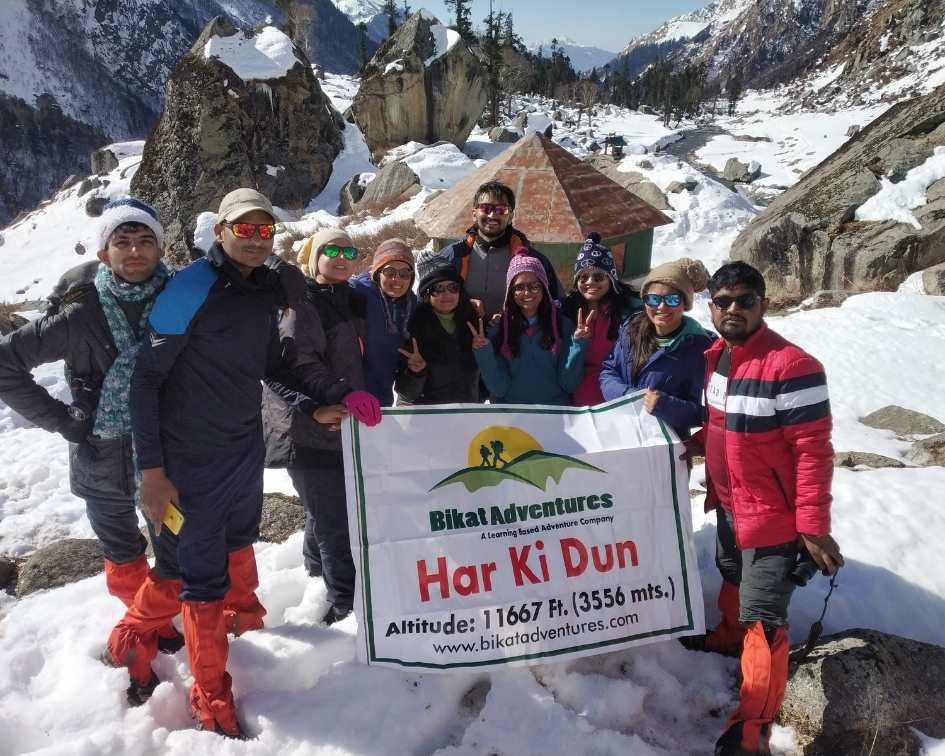
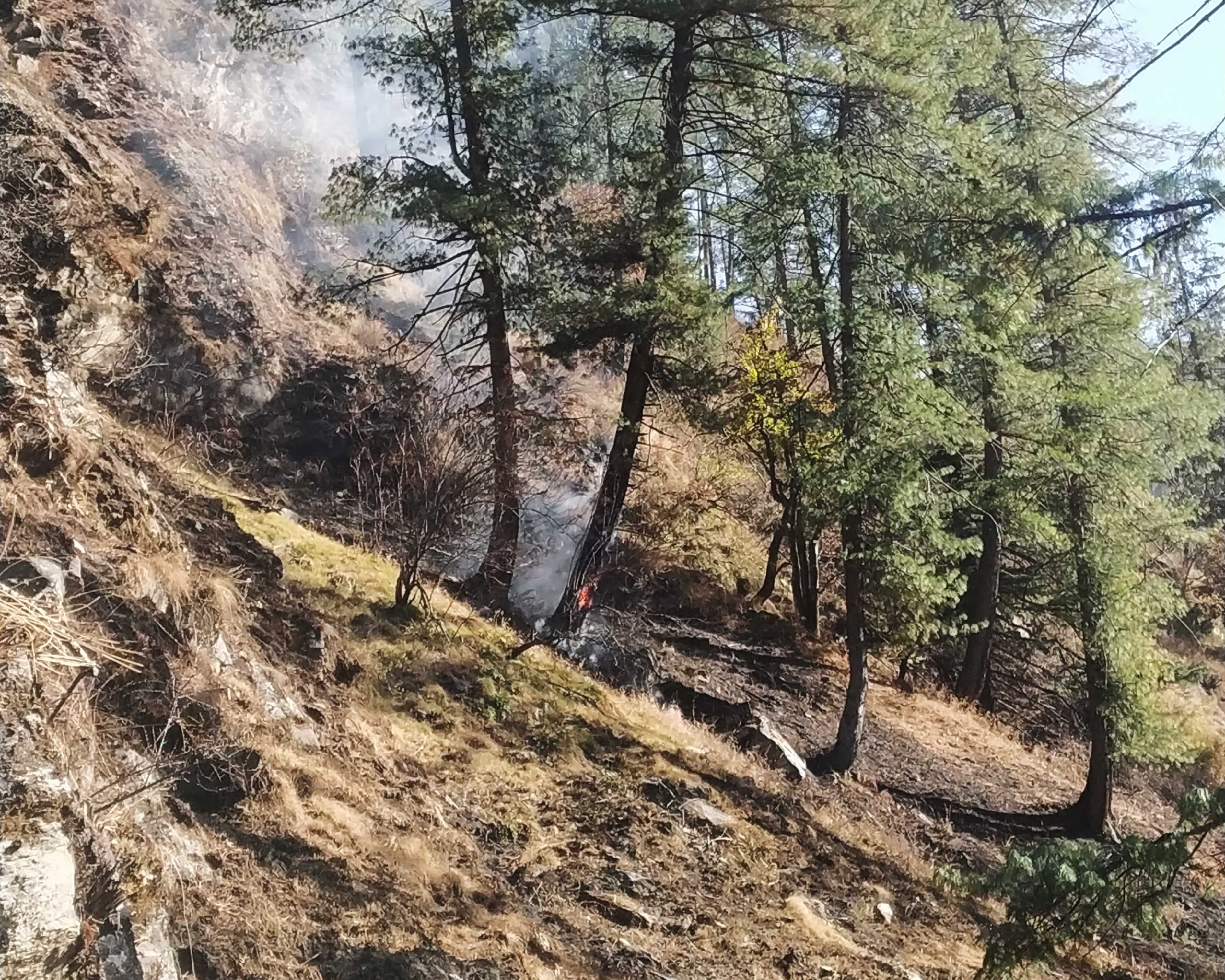
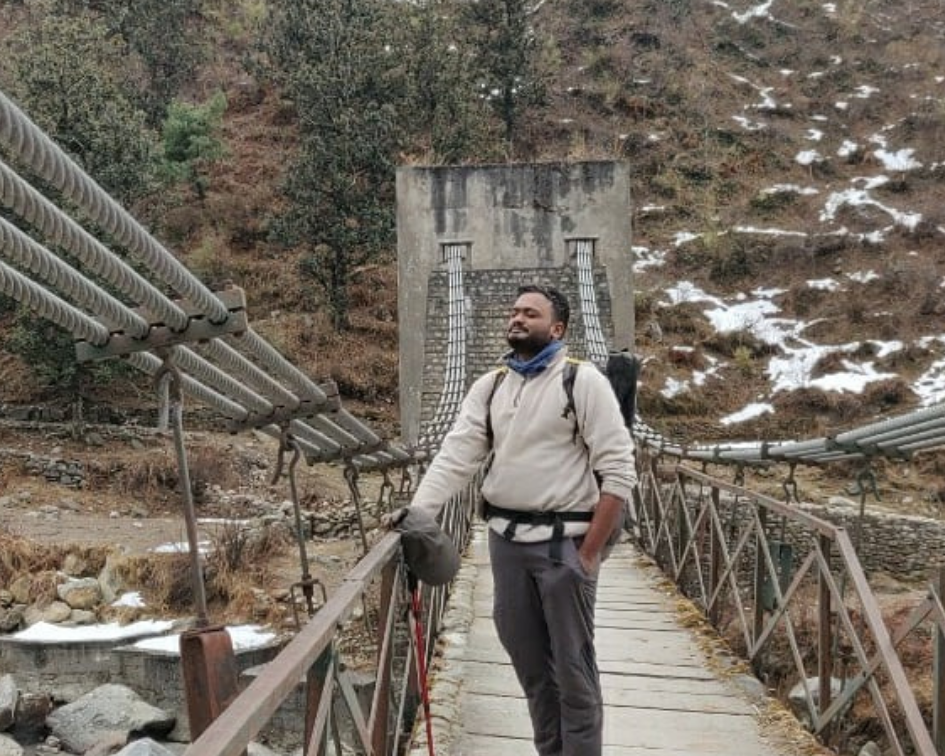
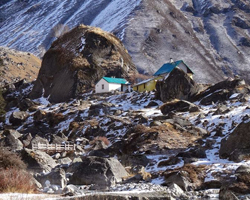
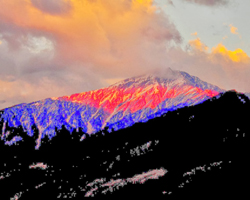
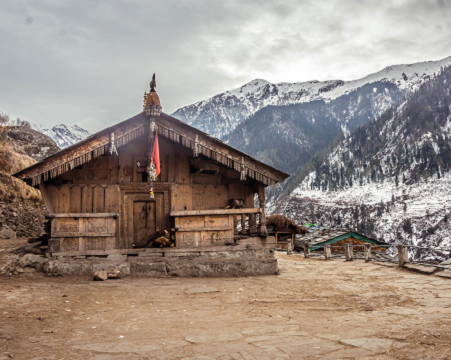
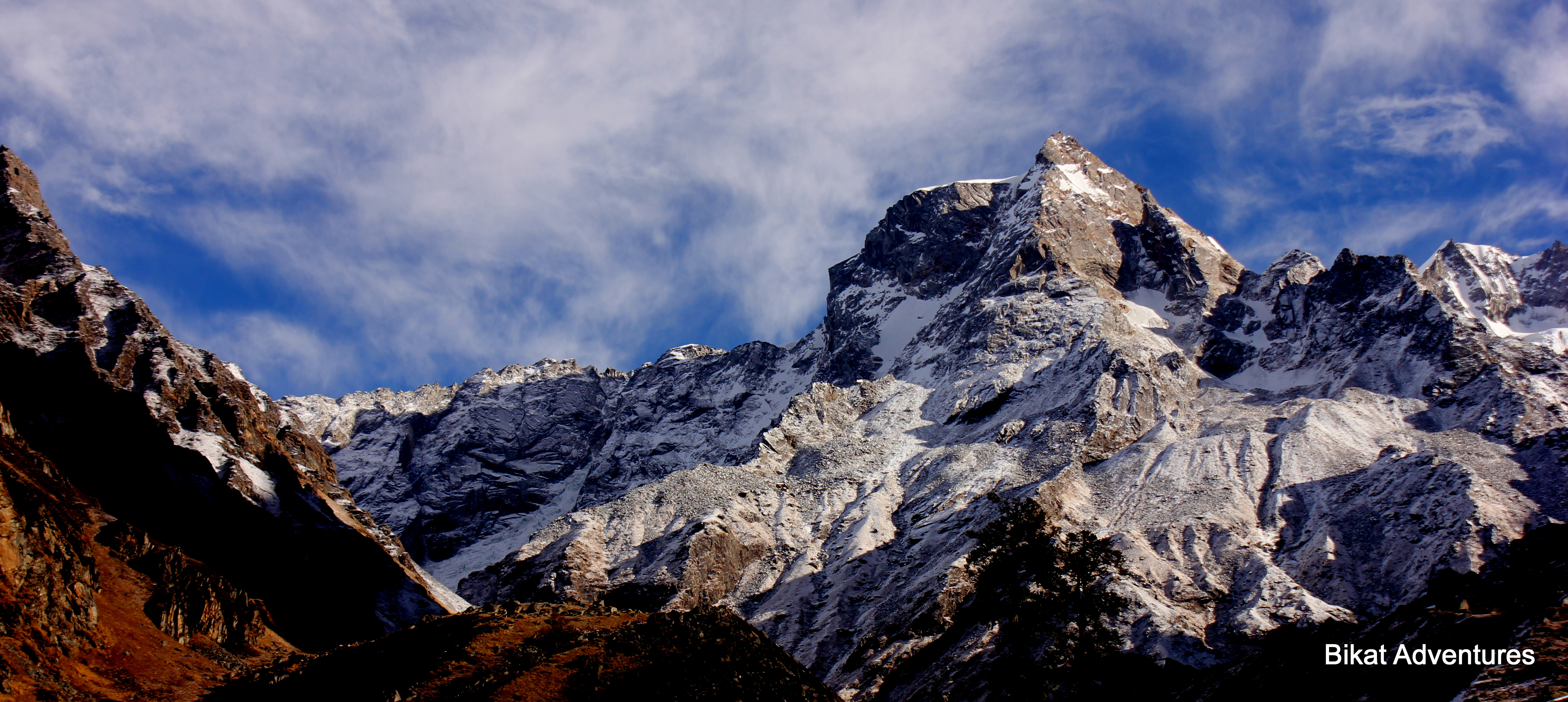
Similar Adventures
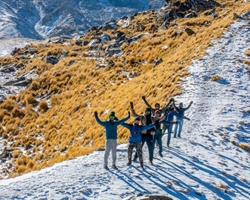
Kuari Pass Trek
The most scenic winter trek for beginners
Uttarakhand
5 Days
BRS 3
3876 m
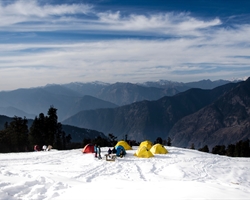
Brahmatal Trek
The Best Beginners' Trek in Uttarakhand
Uttarakhand
6 Days
BRS 3
3856 m
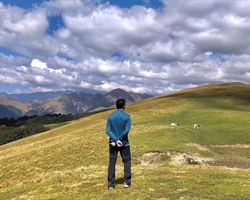
Ali Bedni Bugyal Trek
The Next Chapter of Roopkund
Uttarakhand
6 Days
BRS 3
3535 m
